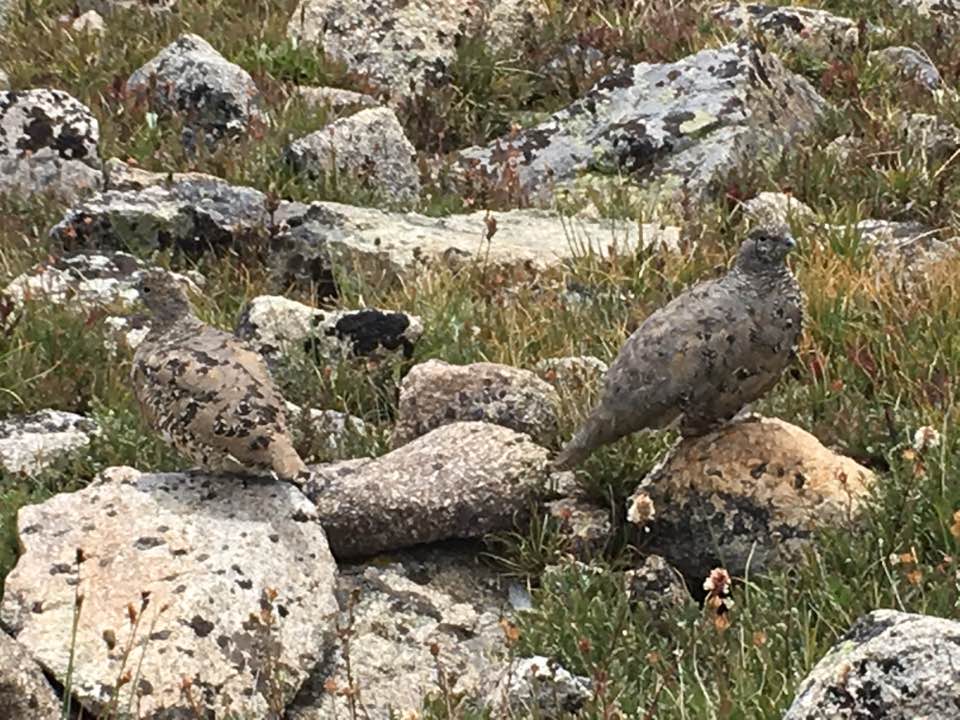
Two ptarmigans on Pawnee Pass
Exhausted from my hike up Pawnee Pass, I stumbled along to a spot where I could sit down and take a break. Breaking out my Kind Bars and some cheese, I sat and nibbled, while drinking water. The hike had taken much more out of me than I had expected. Still, the views of Lake Granby and the surrounding peaks made it all worth it.
Finally, I pulled myself up to make the trek back down to Brainard Lake. Clouds were starting their usual march in for the afternoon, and I definitely did not want to be on the pass if and when thunderstorms rolled in. Pulling on my pack, I gathered my trekking poles and started to walk back across the pass to the eastern side.
Out of the corner of my eye, something flitted across the ground. It happened so quickly, I had trouble catching up with it. I couldn’t locate it despite being certain it is close by. Then another quick movement as it scurried across the trail.
Oh my gosh! Now I know what it is – a ptarmigan! As it crossed to the other side, it sat for a moment on a rock right next to the trail. I quickly grabbed my cell phone, relishing a chance to take a photo up close of this elusive bird. That’s when I realized, there are actually two of them, both sitting on rocks right next to each other.
I managed to snap off three photos in succession before they moved again. As I looked at my photos, I marveled at their ability to camouflage themselves – if not for the shape of the beak, I really wouldn’t have been able to tell the difference between the bird and the rock. Their speckled feathers provided the perfect disguise to meld into the background of the rocky pass.
In two months or so, they feathers would take on an entirely different color. Ptarmigans, you see, don’t migrate like other birds who spend their summers in the Rocky Mountains. They will spend their winters on the snowy tundra, adapting to their winter environment by turning entirely white. Again, using their feather to blend in, and evade their predators that would like nothing better than to kill them for a tasty dinner. Predators include lynx as well as larger raptors.
The smallest member of the grouse family, ptarmigans prefer walking to flying. They lean towards a more sedentary lifestyle, especially in winter when they roost in snow banks. You can find them in habitat at or above timberline even in the harsh winter months. While they will eat buds, leaves and seeds of many plants, their favorite food is willow, which they are especially dependent on in winter.
Whatever the time of year, it’s a special treat to observe the ptarmigan in its native habitat. But you must look long and hard – they are the masters of camouflage.

